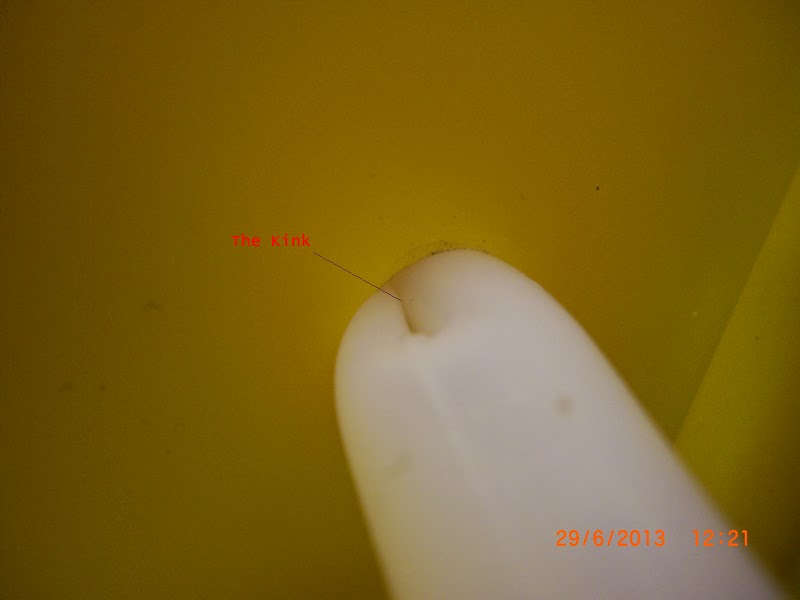This battery-operated car washer was sold for about $45/= including shipping at Q0010. It is suitable for most water cleaning jobs in cars as well as in homes. It is a handy pressure cleaner for washing the air-conditioning outdoor units which hand-operated pressure washer just could not do the work properly. The delivery was the next day which is pretty fast.
Pros
- It has a 32-liter water tank;
- It can deliver up to 1.2 mpa (130 psi) water pressure; Its motor is rated at 3.0 mpa (430 psi)
- It is potable and equipped with all cleaning accessories, such as a water brush, hose, and water gun;
- It has auto-start and stops function triggered by pressure sensing
- It is safer to use as it operates from a 12 volt supply which requires 4 to 5 amperes for normal operation;
- It is constructed from ABS plastic that can withstand rough usage.
Cons
- A full tank of water can be quite heavy to be carried around without having a trolley, But one can always carry a half-full tank then fill it full tank with a pail of water.
- Water can leak from the bottom of the tank when the suction hose is not properly secured;
- The manual is written in Chinese.
Compared to hand pump washer
Pros
- It has a larger water tank;
- It can deliver at least 6 times the water pressure for cleaner wash;
- It does not have a pressure tank that can easily crack;
Cons
- It can be heavy to move due to larger and heavier water tank
Compared to mains operated pressure washer
Pros
- It is safer to operate using 12 volts supply;
- It does not require any hose for connection;
- Can get supply directly from car batteries;
- Easy storage as it comes with a box
Cons
- Refilling of water is required from time to time;
- Needs 230 volts to 12 volts power adapter for mains operation;
Construction
The box is quite pleasing in appearance and comes with a toolbox that can store all the components and accessories. The box can be easily stored away in the storeroom.
The Pump Compartment
Hidden away from view is the pump compartment that is located underneath the water tank. It can be opened for inspection by removing the 8 screws that held the cover as shown here
The 12-volt motor is held onto the bottom of the tank by a set of 4 screws.
Testing
It is noticed that the tank must be almost half full before one can prime the pump to start using the washer.
When filling up the water, water started leaking from the bottom of the tank.
Why the Water Leak?
Water was found leaking from the flexible silicone hose that was only ‘threaded” through the compartment hole without any adaptor or connector. The hose was connected to a non-return strainer located inside the tank.
The design requires the flexible hose to be properly straightened so that the water seal is maintained by the wall of the flexible hose. Water can leak through the ‘kink” if the hose is not properly seated to seal the hole as can be seen from this picture.
What Can be done?
Pull the silicone hose carefully with a light force from the strainer inside the water tank to straighten the hose. This will make sure that the “kink” on the hose will be straightened out. However, as the hose is flexible and can collapse under suction pressure, the “kink” will soon re-appear after some usage.
Easy Permanent fix
Cut a piece of a plastic tube with a diameter of around 7mm. Test if it can easily be inserted into the hole to expand the hose to form a tighter water seal between the compartment hole and the hose as shown. While testing the correct size of the plastic tube to be inserted, unleash the hose clamp and pull the hose from inside the tank until one can try to test the fitting of the plastic tube. Try not to pull the hose out totally as it could be a pain to re-insert the hose again.
While installing the plastic tube, always make sure that the plastic tube would be larger than the inlet of the water pump so that it would not be sucked into the pump should it become loose during operation.
Performance
The washer has a pretty strong water pressure that can even strip off the paint work on a PVC pipe as can be seen from this video.
The pump would stop and start automatically just like any electrically operated pressure washer. It has also a polarity switch that can switch over the polarities automatically without worrying if one has correctly connected the 12-volt cable in the right positive or negative polarities.
The washing operation is quite smooth although one would have expected the soft suction tube to collapse occasionally when there is not enough water in the tank. However, it should not have caused permanent damage to the pump.
Operating from a main operated power adaptor
The washer can be operated from a 12-volt power adaptor which must have an output rating of at least 6 amperes.
Conclusion
Conclusion
It is a cost-effective car battery-operated water pressure washer which is well designed except for the leaking flexible suction hose which can be easily fixed. Other battery-operated water pressure washers would cost easily more than $100/=.









